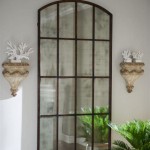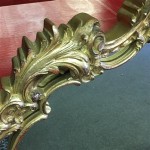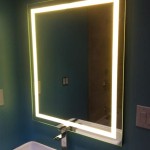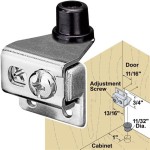Why Parabolic Mirrors Are Used In Headlights
Headlights serve a critical function in vehicle safety, illuminating the road ahead and making the vehicle visible to others. The effectiveness of a headlight relies heavily on its ability to control and direct the light emitted from the bulb. This control is achieved through the precise geometry of a parabolic reflector, which is the core component of most headlight designs. This article explains the underlying physics behind parabolic mirrors and why they are particularly well-suited for headlight applications.
Key Properties of Parabolic Mirrors
Parabolic mirrors possess unique optical properties that make them ideal for collecting and directing light. These properties stem from the specific mathematical definition of a parabola. A parabola is a curve where every point is equidistant from a fixed point called the focus and a fixed line known as the directrix.
Focusing Light Rays
When light rays emanating from the focus strike the reflective surface of a parabolic mirror, they are reflected parallel to the axis of the parabola. This characteristic is crucial for headlight functionality. By placing the light source, typically a bulb or LED, at the focal point of the parabolic reflector, the emitted light rays are collimated into a concentrated beam, minimizing scatter and maximizing forward projection.
Maximizing Light Intensity
The parallel reflection of light rays achieved by the parabolic mirror significantly increases the intensity of the light beam. Instead of the light dispersing in multiple directions, the parabolic reflector concentrates it into a directed beam, increasing the effective brightness and illuminating the road ahead more effectively.
Controlling Light Scatter
The precise control over light direction provided by parabolic mirrors significantly reduces light scatter. This minimizes glare for oncoming drivers and focuses the light where it is needed most, enhancing visibility for the driver.
Different Headlight Designs Utilizing Parabolic Reflectors
While the underlying principle of using a parabolic reflector remains consistent, various headlight designs utilize this technology in different ways. Some designs incorporate complex multifaceted reflectors composed of smaller parabolic segments to further refine the beam pattern. Other systems use a parabolic reflector in conjunction with lenses to achieve specific light distribution patterns.
Advantages of Parabolic Reflectors Over Other Reflector Types
Compared to other reflector types, such as spherical or elliptical reflectors, parabolic reflectors offer superior performance in headlight applications. Spherical reflectors, while easier to manufacture, tend to scatter light more widely, resulting in a less focused beam. Elliptical reflectors have two focal points, which, while useful in some optical systems, are not ideal for creating the concentrated beam required for headlights.
Materials Used in Parabolic Reflectors
Parabolic reflectors in headlights are typically made from materials with high reflectivity, such as aluminum or polycarbonate. Aluminum offers excellent reflectivity and durability. Polycarbonate, a type of plastic, is lightweight and allows for greater design flexibility, enabling the creation of more complex reflector shapes.
The Role of Lenses in Headlight Assemblies
While the parabolic reflector collimates the light, lenses play a vital role in shaping and distributing the light beam. Lenses can be used to create specific beam patterns, such as low beams for city driving and high beams for highway driving. These lenses work in concert with the parabolic reflector to optimize the light distribution for different driving conditions.
Evolution of Parabolic Reflector Technology in Headlights
Headlight technology has continually evolved, with ongoing refinements in parabolic reflector design and manufacturing. Modern headlights often incorporate advanced features like adaptive front lighting systems (AFS), which adjust the direction and intensity of the light beam based on steering angle and vehicle speed. These systems rely on the precise control offered by parabolic reflectors to dynamically adjust the light distribution.
Regulations and Standards for Headlight Performance
Headlight performance is subject to strict regulations and standards to ensure safety and minimize glare for other drivers. These regulations dictate the permissible beam patterns, intensity, and color temperature of headlights. The precise control of light offered by parabolic reflectors allows manufacturers to meet these stringent requirements.
The Future of Parabolic Reflectors in Automotive Lighting
Despite the emergence of new lighting technologies, such as LED matrix and laser lights, the fundamental principles of parabolic reflection remain relevant. Parabolic reflectors continue to be a core component of many headlight designs, and their inherent efficiency in collecting and directing light makes them a valuable technology in automotive lighting.

Why Are Parabolic Mirrors Used In Headlight Design Do They Focus All Rays On The Same Point After Reflection From Surface Quora
Why Are Parabolic Mirrors Used In Headlight Design Do They Focus All Rays On The Same Point After Reflection From Surface Quora
Why Is A Parabolic Mirror Used In Searchlights Quora

Why Car Headlights Parabolic Unleash Maths

How A Concave Mirror Is Used In Headlights And Searchlights To Throw Light At Long Distance Homework Study Com

Which Type Of Mirror Is Used In Headlights Vehicles
Why Is A Parabolic Mirror Used In Searchlights Quora

Why Car Headlights Parabolic Unleash Maths

Which Mirror Is Used In The Headlights Of A Car

Why Car Headlights Parabolic Unleash Maths








